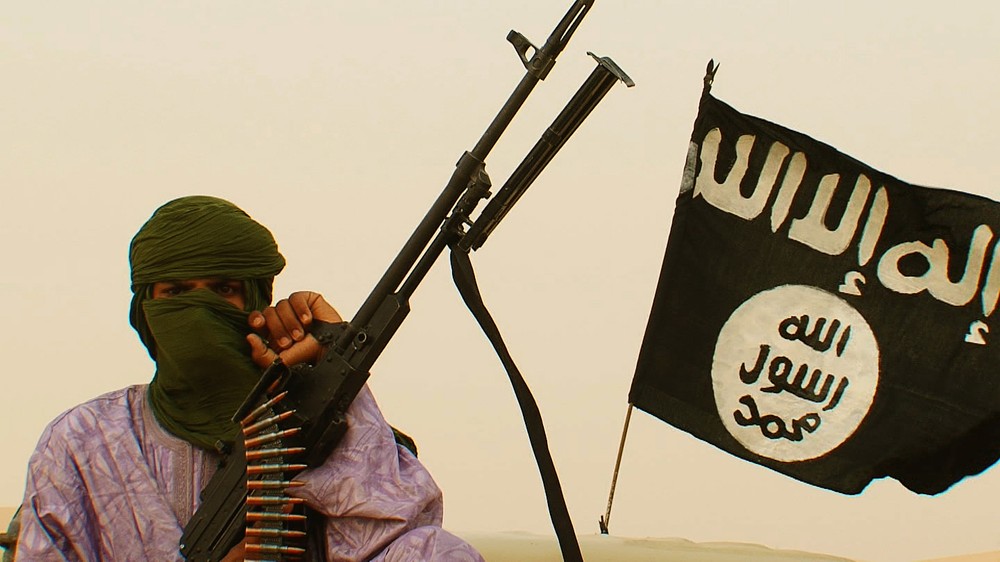

Meierrieks D & Schneider F (2016) The short-and long-run relationship between the illicit drug business and terrorism. Makarenko T & Mesquita M (2014) Categorizing the crime-terror nexus in the European Union.Global Crime 15 (3-4):259-274. Makarenko T (2004) The crime-terror continuum: Tracing the interplay between transnational organized crime and terrorism. Lyman M & Potter GW (2011) Organized crime, 5th ed. Korteweg R (2008) Black holes: On terrorist sanctuaries and governmental weakness. Kilcullen D (2009) The Accidental Guerilla: Fighting Small Wars in the Midst of a Big One.

Survival: Global Politics and Strategy 48 (4):111-130. Kilcullen D (2006) Counter-insurgency redux. Combatting Terrorism Center at West Point 5 (2). Khattak D (2012) The complicated relationship between the Afghan and Pakistani Taliban. Innes MA (2007) Cracks in the System: Sanctuary and Terrorism after 9/11. Hutchinson S & O’Malley P (2007) A crime-terror nexus? Thinking on some of the links between terrorism and criminality. Contemporary Security Policy 26 (2):189-221. Hammes TX (2005) War evolves into the fourth generation. Goepner EW (2018) War State, Trauma State: Why Afghanistan Remains Stuck in Conflict. Giustozzi A (2009) Decoding the New Taliban: Insights from the Afghan Field. Gilmore J (2011) A kinder, gentler counter-terrorism: Counterinsurgency, human security, and the war on terror. Washington DC: Foundation for Defense of Democracies. The Afghanistan-Pakistan Theater: Militant Islam, Security & Stability. Ankara Bar Review 2 (2):46-80.įelbab-Brown V (2010) The Drug-Conflict Nexus in South Asia: Beyond Taliban Profits and Afghanistan. Studies in Conflict & Terrorism 28 (3):237-252.ĭurnagol E (2009) The role of drugs in terrorism and organized crime. Studies in Conflict & Terrorism 24 (1):43-58.ĭishman C (2005) The leaderless nexus: When crime and terror converge. 81479_4.ĭishman C (2001) Terrorism, crime, and transformation. Transnational Terrorism, Organized Crime and Peace-Building.
Taliban insurgency free#
The ANNALS of the American Academy of Political and Social Science 618 (1):232-247.īlua A (2004) Central Asia: Is the IMU still a threat to regional security? Radio Free Europe Radio Liberty, 23 January.Ĭrilly R (2013) Senior Pakistan Taliban figure explains why they shot Malala Yousafzai, The Telegraph, 17 July.ĭaase C (2010) Terrorism and Organized Crime: One or Two Challenges? In: Benedek W, Daase C, Dimitrijević V, & van Duyne P (eds). Terrorism are They Converging? Vocal Europe, 12 February.īergen P & Footer L (2008) Defeating the attempted global Jihadist insurgency: Forty steps for the next president to pursue against Al-Qaeda, like-minded groups, unhelpful state actors, and radicalized sympathizers. Studies in Conflict & Terrorism 32 (2):95-108.Īfghan Zarizha (2015) Taliban strengthening links to organized crime in Afghanistan: UN report, 10 February.Īntonoglou Y (2018) Organized Crime Vs. The economic sources are the primary main reason why the two organizations converge.Īcharya A, Bukhari SAAS, & Sulaiman S (2009) Making money in the Mayhem: Funding Taliban insurrection in the Tribal Areas of Pakistan. The primary objective of organized crime is to gain profit, and the objective of the insurgent is to contest the state power and promote political change through violence. The finding indicates that, although the objectives of the insurgent and organized crime organizations differ widely, these enabling variables are also suitable for organized crime organizations. The Taliban and organized crime groups are involved in kidnapping for ransom, drug trade, extortion, and exploitation of natural resources. Afghanistan is a war-torn country and weak governance, terrorism, narcotics, illegal mining, poor border control, and widespread corruption provide the perfect opportunity for convergence of the Taliban with organized criminal and insurgent groups in the region.

Each group has developed both criminal and terrorist elements while not relinquishing its original organizing principle. The growing connection between insurgents and organized crime poses essential challenges to the region. The method of this study is qualitative through the descriptive-analytical approach. This paper aims at exploring the Taliban nexus with organized crime groups in Afghanistan and the region through Makarenko’s crime-terror continuum theory. The Afghanistan-Pakistan region provides a geographically secure location and a space of opportunity for organized crime and terrorist groups. Afghanistan has been demolished by more than three decades of the ongoing war since the war against the Soviet Union started in 1979.


 0 kommentar(er)
0 kommentar(er)
